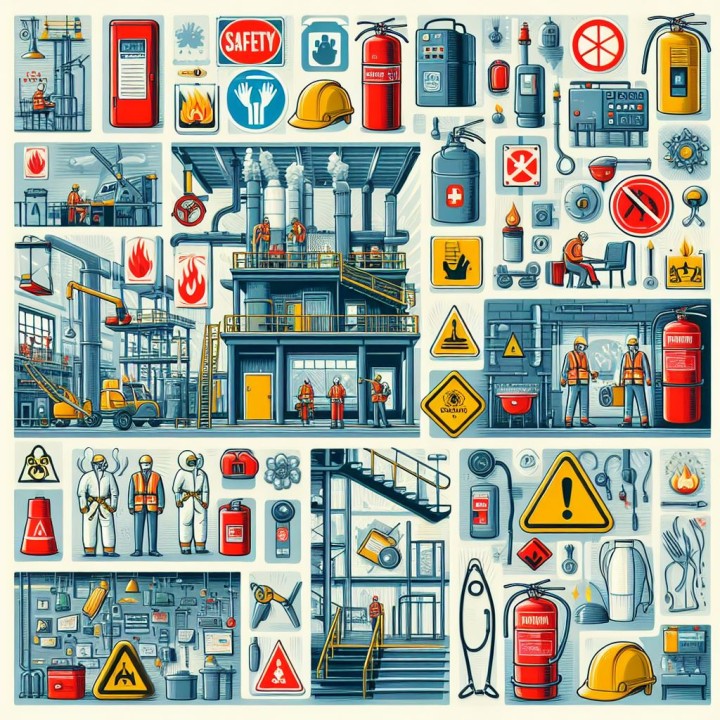Most Popular
With a focus on asset management and safety, Reliability Centered Maintenance (RCM) goes beyond being a mere methodology. It embodies a philosophy that highlights the interconnectedness of operational reliability and safety systems. This partnership, built on a strategic mindset towards maintenance, guarantees that safety and efficiency are not conflicting goals but rather interconnected objectives that propel the company towards success.
Maximizing Safety Systems: Unlocking the Power of RCM
RCM is a methodical approach to assessing the maintenance needs of physical assets in their operational setting. It delves deeper than conventional maintenance schedules to gain a more nuanced comprehension of how various assets contribute to the overall safety and efficiency of operations. This understanding is crucial, particularly in industries where the failure of critical systems could have severe consequences such as safety hazards, environmental damage, or financial loss.
Prioritizing Safety in RCM
RCM prioritizes safety at its core. The methodology begins by identifying the functions of assets, with a specific emphasis on those that, if they were to fail, could potentially compromise safety. Through a thorough analysis of failure modes and their potential consequences, RCM enables the prioritization of maintenance activities aimed at preventing failures that could have significant safety implications. This approach not only improves the reliability of safety-critical systems but also guarantees compliance with regulatory standards and industry best practices.
Predictive Maintenance: Taking Charge of Safety
Utilizing predictive maintenance techniques is a fundamental aspect of RCM. Utilizing advanced technologies like vibration analysis, thermography, and ultrasonic testing enables the early detection of potential failures, often before they pose any safety risks. By adopting a proactive approach, not only can accidents be prevented, but unplanned downtime can also be minimized and the lifecycle of assets can be extended. This highlights the strong connection between safety and efficiency, showcasing the benefits of this approach.
RCM: A Strategy for Ensuring Safety Integrity Levels
RCM offers a framework to ensure that maintenance strategies are in line with the necessary levels of safety integrity, which is crucial in environments where safety systems are classified by Safety Integrity Levels (SILs). Through a thorough analysis of failure modes and their potential impacts on safety-critical systems, RCM assists in developing maintenance strategies that uphold or improve the SILs of these systems. This guarantees their consistent and dependable performance in fulfilling their safety functions when required.
Examining the Impact of RCM on Safety Measures
The real-world applications of RCM effectively demonstrate its impact on safety systems. As an example, implementing a maintenance strategy driven by RCM in the energy sector led to a notable decrease in maintenance expenses by 20%. Additionally, it successfully mitigated the risk of gas leaks, which is a critical safety concern. In the aviation industry, the implementation of RCM principles has played a crucial role in improving the safety and reliability of aircraft systems, which has contributed to the industry's outstanding safety record.
The Importance of RCM in Fostering a Strong Safety Culture
In addition to maintenance strategies and operational efficiency, RCM plays a vital role in cultivating a culture of safety within organizations. By prioritizing safety in maintenance planning and decision-making, RCM ensures that safety is a core component of operational planning, rather than an afterthought. This approach not only minimizes risks, but also fosters a strong safety culture that is ingrained at every level of the organization.
RCM as a Driver for Secure and Streamlined Operations
The connection between RCM and safety systems is inherently interdependent. With a strategic approach to maintenance that focuses on safety and efficiency, RCM allows organizations to maintain smooth operations without compromising on safety. Instead, it offers a framework for accomplishing both goals, thereby strengthening the durability and longevity of operations. In today's ever-changing business landscape, it is crucial for organizations to embrace the principles of RCM to effectively navigate the challenges posed by technological advancements and regulatory changes. By prioritizing safety and maintenance, companies can achieve their operational goals while ensuring the well-being of their employees and customers.
